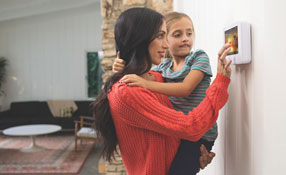January 5, 2015 is the deadline to suggest changes to the National Fire Protection Association’s two documents that serve the security marketplace. Anyone can provide public input into the standards through the NFPA website.
NFPA 731: Standard for the Installation of Electronic Premises Security Systems provides guidance on how to install, test and maintain electronic premise security systems and their components. Its specific requirements are written so that they can be easily incorporated into legal requirements by local jurisdictions that oversee building construction and compliance.
NFPA 730: Guide for Premises Security is a “softer” standard. It’s not equipment-driven and not as specific but rather designed to offer guidance. Not intended to be incorporated into an enforceable law, NFPA 730 relies on an expectation of “reasonable care” related to aspects of construction, protection, occupancy, features and practices to reduce security vulnerability.
These two standards were first issued in 2006, now in their third printing, and are among the 300 or so documents in the NFPA’s portfolio. NFPA, a standards-developing organization with 75,000 members, creates standards covering all aspects of the building trades (not just fire). Almost all of NFPA’s standards are approved by the American National Standards Institute (ANSI).
One of NFPA’s well-known standards is the National Electrical Code (NEC), which regulates electrical installations and has been adopted into law in thousands of jurisdictions and almost every state. In contrast, the enforceable standard relevant to the security market -- NFPA 731 – has only been adopted by a “handful” of local jurisdictions, according to Richard Roux, NFPA 730/731 staff liaison.
Even if not adopted as law, elements of NFPA standards can be incorporated into contracts and/or requests for bids |
Even if not adopted as law, elements of NFPA standards can be incorporated into contracts and/or requests for bids. “There aren’t many laws that say you need a security system,” says Roux. “It’s owner-driven. Usually the installer or the engineer is cognizant of the standards.” Roux says NFPA sells quite a few of the documents from each printing, generally to installers, engineers, owners, insurance companies, governments and police departments. “I get a lot of calls,” he adds.
While NFPA offers 300 documents, only a handful get actively promoted – and the security standards are not part of that handful.
NFPA 731 incorporates references to existing standards from other organizations as it specifies suitable equipment for an installation. As examples, NFPA 731 refers to Security Industry Association (SIA) standards on control panels, false alarm reduction and passive-infrared motion detectors. Also mentioned within NFPA 731 are the FIPS 140-2 federal information processing standard and UL standards related to access control, key locks, combination locks, burglary-resistant electric lock mechanisms, and high security locks.
A 26-member committee oversees revision of the security-related standards – one committee handles both documents. Members of the committee fall into nine categories – manufacturers, users, installers, maintainers, labor, laboratory testing agencies, enforcing authorities, insurance agencies and consumers. The committee decides whether to accept or reject any suggested changes, and the resulting revised document goes through an extensive review process before being adopted.
“There’s a whole bunch of checks and balances NFPA goes through,” says Roux. “The requirements are valid and real and come about because of public input and knowledge. When the committee thinks it’s done, they call it a draft and put it up for comment. NFPA doesn’t do these things in the dark. There’s a procedure to the balloting.”










































